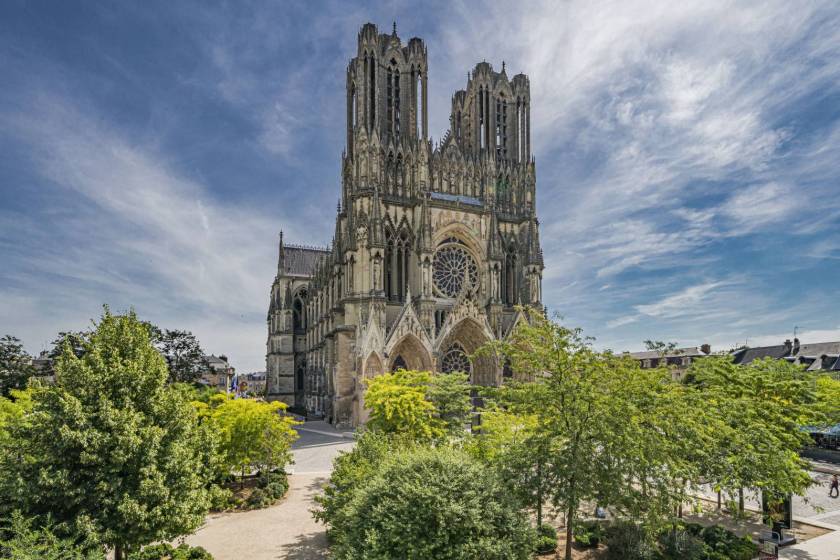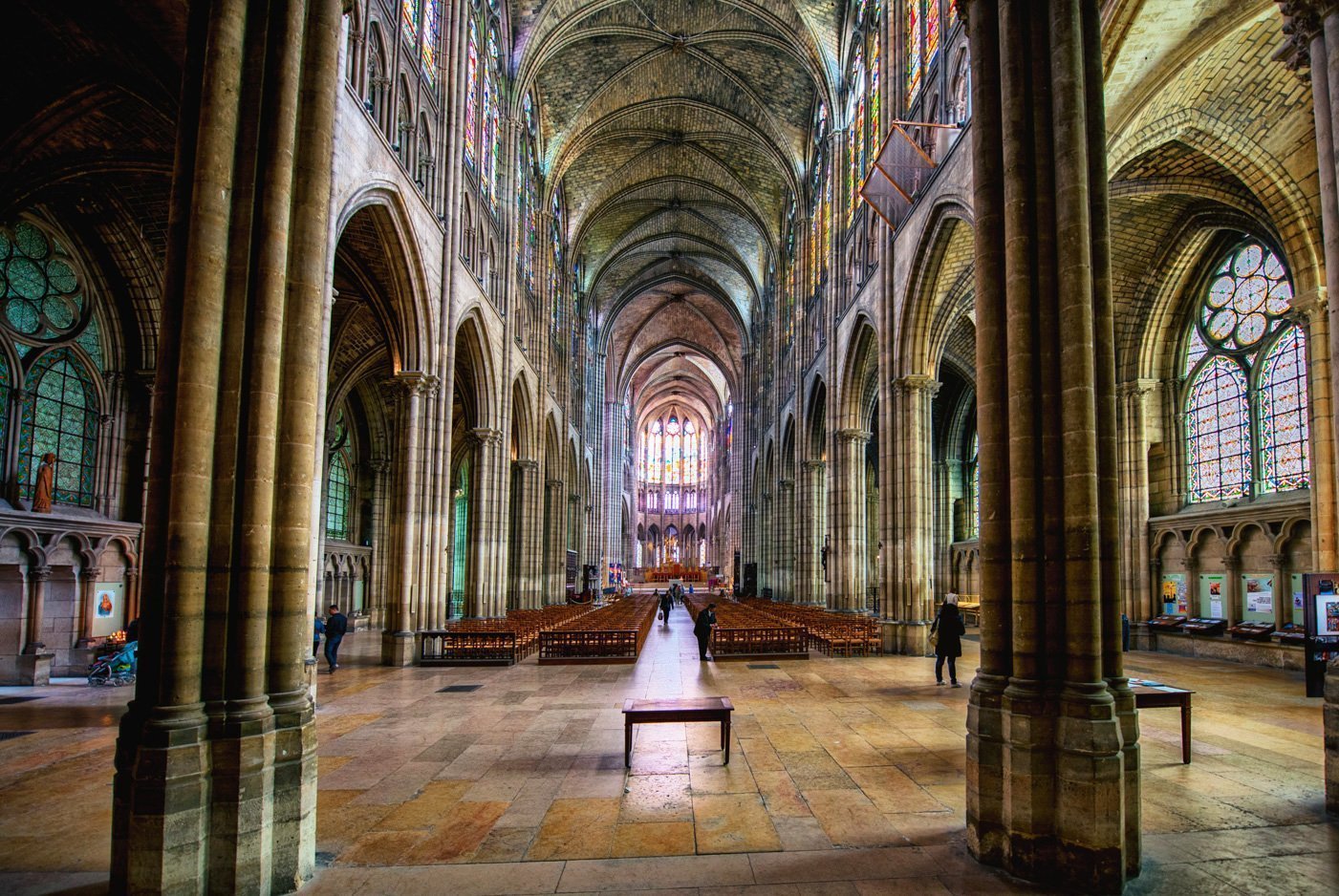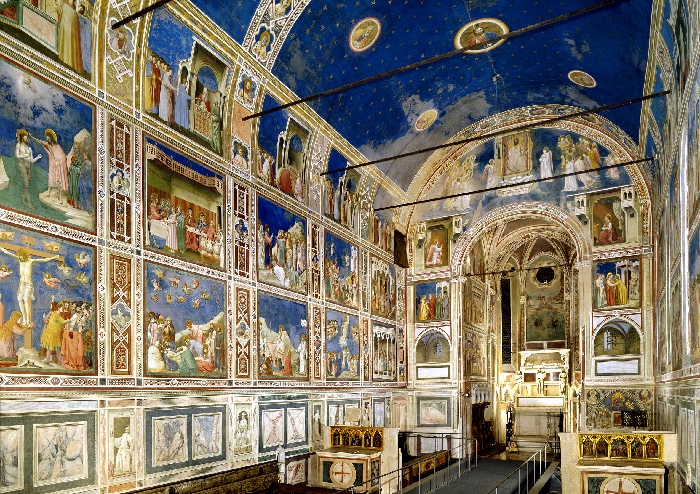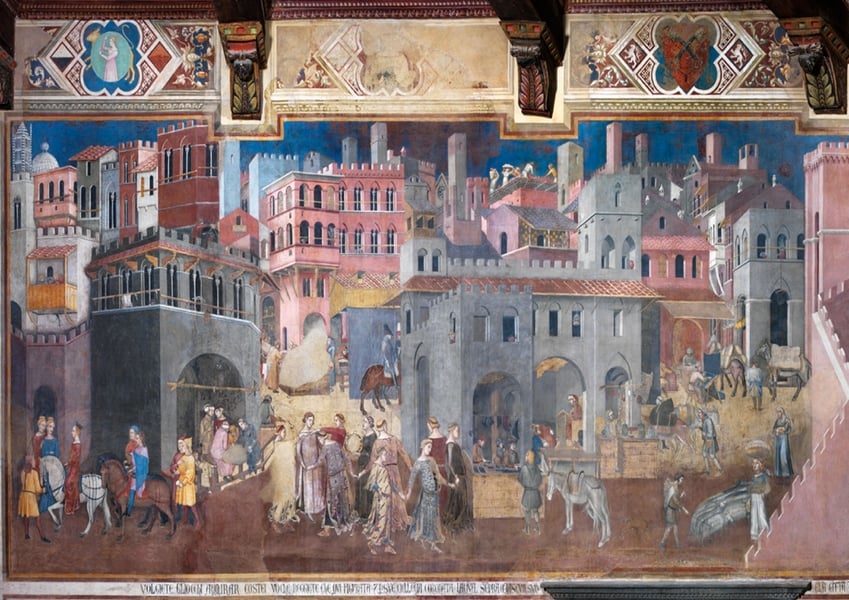
I have been wanting to write a post on the Gothic style for a long time, and I have finally found the time to take you on a fascinating journey through the characteristics and most significant works of this art form that aroused wonder and admiration in the period between the 12th and 14th centuries.
Gothic is an artistic and architectural movement that left an indelible mark on the history of European art. In this article, I explain how and why Gothic art developed, what its peculiarities are from an architectural point of view, the sculptures that characterise it and the paintings that represent its essence.
Discovering the Gothic style: a journey through European art and architecture

L’abbazia di Saint Denis a Parigi
The Gothic style originated in France in the 12th century, with the Abbey of Saint Denis in Paris being the first example of this style, dating from 1144. It soon spread throughout Europe, profoundly influencing art and architecture until the 14th century.
GOTHIC ARCHITECTURE
Gothic architecture is distinguished by its light volumes and the use of pillars and columns instead of the traditional massive walls. Stained glass windows are a distinctive feature, as they bring light into the interior of buildings and become veritable canvases for artists, who adorn them with sacred representations and landscapes.
Gothic cathedrals, such as Reims Cathedral, Cologne Cathedral, Canterbury Cathedral and Notre Dame in Paris, are among the most emblematic structures of this art form, which also has numerous examples in Italy, such as the Basilica of St Francis of Assisi, Orvieto Cathedral and Milan Cathedral.
Gothic architecture, with its light, tapered volumes, revolutionised the approach to building. Pillars and columns replaced massive walls, allowing the creation of large windows that filtered divine light into the buildings. But we cannot forget one of the most fascinating elements of Gothic architecture: the rose window. This decorative element, placed at the centre of cathedral façades, has complex geometric shapes, often hexagonal or octagonal.
The Gothic rose window not only offers a marvellous stained glass window, but is also a symbol of perfection and an invitation to raise one’s eyes to the divine. It embodies the skill and mastery of Gothic craftsmen in combining aesthetic beauty with deep spiritual meaning.
GOTHIC SCULPTURE
Gothic sculpture evolved in parallel with Gothic architecture, abandoning integration into structures and assuming an autonomous dimension. The sculptural works are characterised by their delicacy and the elongation of the subjects, which present realistic features and intense expressiveness.
The wooden crucifixes are particularly touching, arousing emotions in the faithful. The subjects depicted include biblical, allegorical and mythological figures, months, seasons, trades, zodiac signs, vices and virtues, as well as the seven Arts, elements reminiscent of medieval literature.
Gothic sculptures, with their grace and emotional intensity, tell stories and arouse deep emotions. Gothic sculptural works are freed from their integration into architectural structures and acquire an autonomous dimension. The subjects are depicted realistically, with delicate strokes and engaging expressiveness.
The statues in the round stand as true three-dimensional presences, capturing the attention of the faithful, developing biblical, allegorical and mythological themes, bringing to life sacred figures, representations of trades, virtues and vices.
These sculptural masterpieces become tangible testimonies of faith and beauty, celebrating the connection between humanity and the divine in Gothic art.

Cappella degli Scrovegni a Padova
GOTHIC PAINTING
Gothic painting developed significantly in the 13th century, thanks to the revolutionary work of artists such as Giotto. Giotto’s works, such as the frescoes in the Basilica of Assisi and the Scrovegni Chapel in Padua, introduce a realistic style, in which characters are depicted with realistic gestures and expressions, and the use of perspective becomes predominant.
Religious scenes are still central to Gothic art, with the image of Mary and Child and St Francis of Assisi assuming great importance. Some artists abandoned the traditional Byzantine gilded background to create more realistic settings, while others experimented with the technique of chiaroscuro to give characters three-dimensionality.
Gothic paintings fascinate with their liveliness and attention to detail. While the gilded backgrounds, typical of Byzantine art, persist, some Gothic artists experimented with the use of more realistic settings, making the pictorial spaces even more engaging. The use of chiaroscuro also lends three-dimensionality to the characters, making them almost tangible. Gothic paintings, often with a religious theme, capture the essence of spirituality, providing a visual experience that transcends time and brings the observer closer to the divine.
ARTISTS OF GOTHIC ART
In addition to Giotto, there are other masters of Gothic art who helped to break with Byzantine art and break new ground. These include Berlinghiero Berlinghieri, Margaritone d’Arezzo, Giunta Pisano, Cimabue and Giorgio Vasari. I cannot forget the artists of the Sienese school, such as Duccio di Buoninsegna, Pietro and Ambrogio Lorenzetti and Simone Martini, nor those of the Roman school, such as Pietro Cavallini and Jacopo Torriti.

Ambrogio Lorenzetti, Effetti del Buon Governo in città, Siena, Palazzo Pubblico, Museo Civico, sala della Pace, © Comune di Siena, foto Roberto Testi
The Gothic style represents a fascinating chapter in the history of European art and architecture. Through its verticality, light volumes and delicate expressions, it left an indelible mark on the visual culture of the Middle Ages. Gothic cathedrals, sculptures and paintings bear witness to the grandeur and inspiration of an era that gave birth to timeless masterpieces.
Getting to know the Gothic style means immersing oneself in a world of emotions and discoveries, in which the human soul finds its highest expression.

